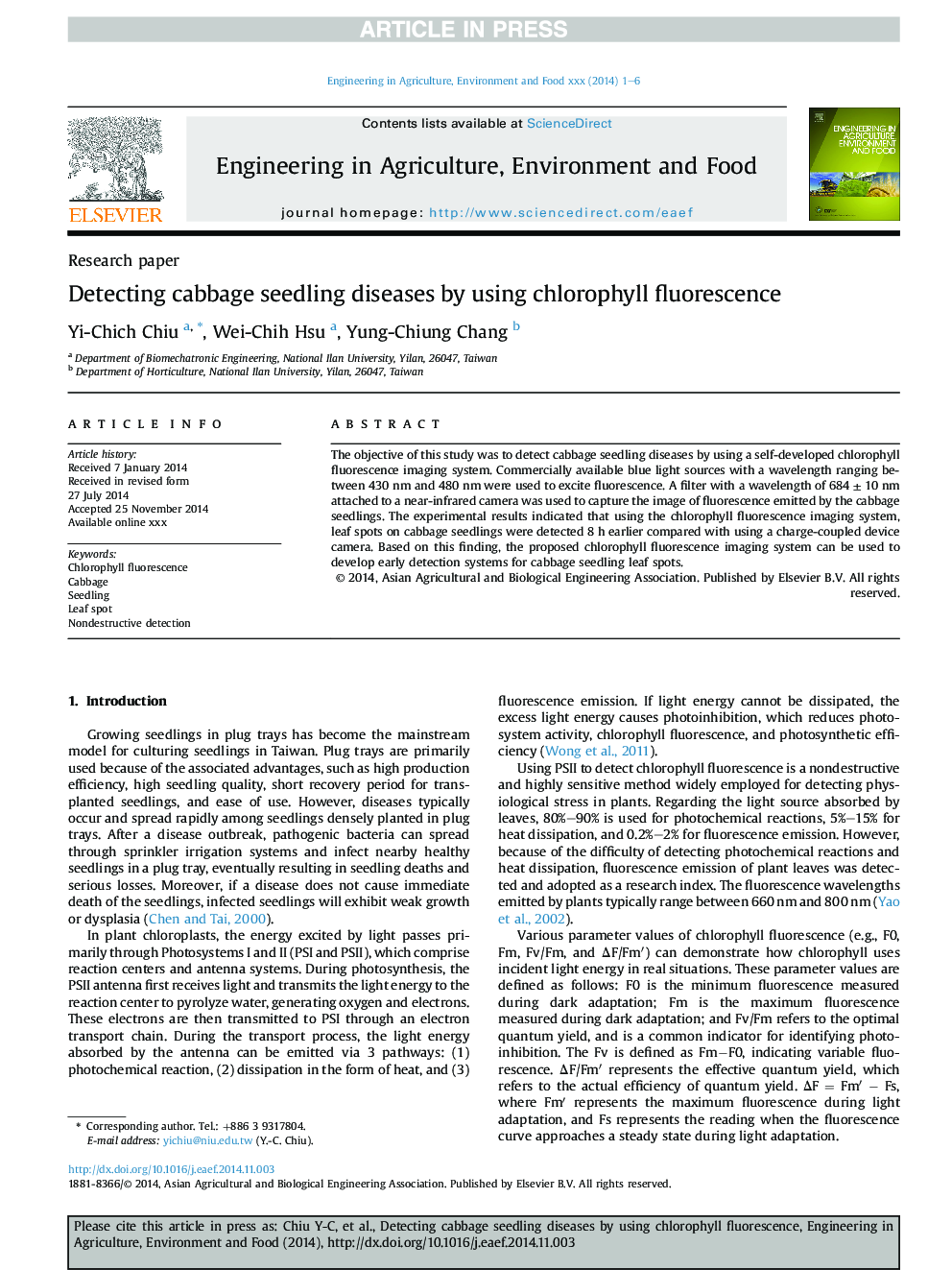| Article ID | Journal | Published Year | Pages | File Type |
|---|---|---|---|---|
| 4508461 | Engineering in Agriculture, Environment and Food | 2015 | 6 Pages |
Abstract
The objective of this study was to detect cabbage seedling diseases by using a self-developed chlorophyll fluorescence imaging system. Commercially available blue light sources with a wavelength ranging between 430 nm and 480 nm were used to excite fluorescence. A filter with a wavelength of 684 ± 10 nm attached to a near-infrared camera was used to capture the image of fluorescence emitted by the cabbage seedlings. The experimental results indicated that using the chlorophyll fluorescence imaging system, leaf spots on cabbage seedlings were detected 8 h earlier compared with using a charge-coupled device camera. Based on this finding, the proposed chlorophyll fluorescence imaging system can be used to develop early detection systems for cabbage seedling leaf spots.
Related Topics
Life Sciences
Agricultural and Biological Sciences
Agronomy and Crop Science
Authors
Yi-Chich Chiu, Wei-Chih Hsu, Yung-Chiung Chang,
